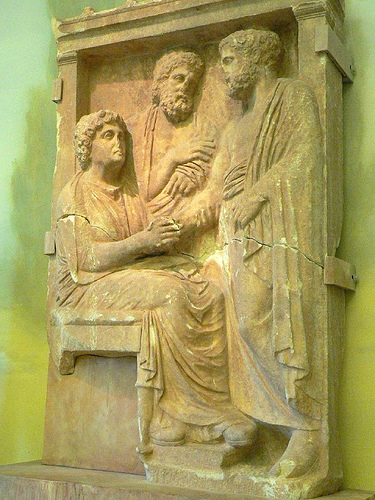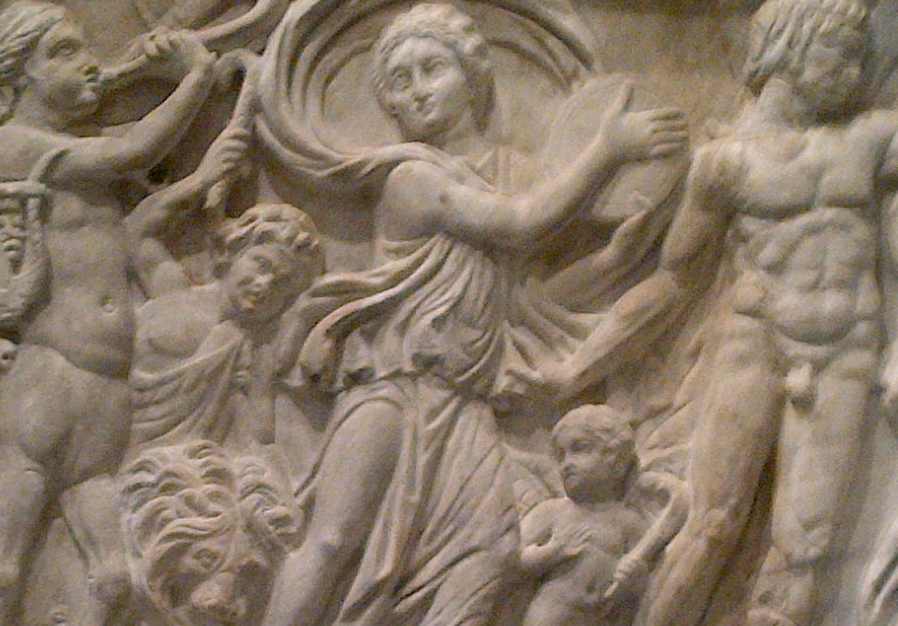Stylistic differences between the pieces of art form Greek and Roman periods can be seen as rather insignificant. This can be explained by the peculiarities of these two cultures. Greek Empire exercised the role of the world power propagating cultural values of mass culture until this role was taken away by the new world power which was the Roman Empire. The Roman Empire and its culture inherited all the achievements and winnings from the Greek Empire along with its cultural values and basic conceptions of art. Thus, the basic principles of Greek pieces of art are so evident in Roman ones. This paper aims to explore this tendency on the example of two pieces of art form Greek and Roman culture. Generally, the closer look to these pieces of art makes it evident that the cult of extolment of human body’s beauty is a prevailing idea both for the art of Greece and Roman Empire with some insignificant differences in their approach. In addition, the difference can be also explored within the subject matters from both cultures.
To see the main tendencies in the art of Greece and Rome, and also to make a comparative analysis of these tendencies the two following objects were chosen. The first object is the Greek Attic Pentelic Marble Grave Stele dated 350 to 300 BC. The museum’s information describes this object in the following way,
The stele here is treated as an architecturalized niche, framed by pilasters, a lintel and an architrave carrying a flat tiled roof. Two men stand by a seated woman named Krinylla, daughter of Stratios, according to the epitaph still faintly visible on the architrave. The bearded man in the center is Naukles, son of Naukrates of Lamptrae, while the man on the right is Naukrates, son of Naukles of Lamptrae. The second Naukles must be the grandfather of the first. Lamptrae was a district or deme of Attica (University of Pennsylvania Museum of Archaeology and Anthropology par. 2).

And the second object is the Roman Marble tomb loculus cover dated late 2nd to 3rd century AD. The museums information about the object is: “This panel sealed a burial niche in a tomb. The scene represents a Bacchic procession” (University of Pennsylvania Museum of Archaeology and Anthropology par. 1). The objects can be described as quite similar in their stylistic characteristics; although, the images under consideration have a row of differences in their subject-matter, and the message they convey.

Speaking about the similarities between these sculptures, it should be mentioned that they are quite many. First of all, they are both accomplished of the marble, and have almost the same size. As their medium is the same, the artworks also have similar color which is usual for marble objects. Next, they are both in a good condition in spite of their being related to a quite ancient historical period. Both of the objects look very similar due to their similarity in proportions of human bodies, people’s outfit and their appearance in general. Both reliefs show human body in its best condition exalting the values of esthetes. However, the sculptures still have particular differences; the main of them is in conveying different messages.
Speaking about the messages the pictures suggest to the audience, it should be stated that they can be described as the main difference between the two objects. The Greek sculpture can be described as related to the pictures from people daily life. Observing the sculpture the viewer is reminded about the scenes from family interaction. We see the two men discussing some important family matter with a woman from their family. The second sculpture cannot be described as featuring some highly moral subject-matter. The viewer observes the scene from ancient religious celebration called Bacchic procession. Such celebrations are known for their immoral overtone, rivers of wine and the other alcohol beverages, and unlimited desiderium for immorality and uncontrolled festivity. The difference in the plot of these sculptures seems to be not occasional. This common tendency can be observed as the main difference between the art of the Greek and Roman Empire. The last one is known for its moral breakdown, and said to be degenerated, corrupted and deteriorated on the reason of this moral breakdown. People in Rome were known for their constant thirst for festivals and entertainment. This destructive tendency led to the fall of their Empire.
Furthermore, as a continuation of the sculptures’ differences people’s outfit should be discussed. Adding to the immoral implication of the procession depicted in the Roman sculpture, people’s dressing conveys the message of the Roman moral breakdown. Compared to the decent outfit of family members in the Greek artwork, the dressing of Roman sculpture personages appears as suggestive and graceless.
Concluding on all the information related above, it should be stated that the two sculptures under consideration belonging to the Greek and Roman cultures can be described as rather similar in their appearance and stylistic characteristic. The artworks are accomplished at the same medium, have similar color and human body depiction conceptions. However, there also exist significant differences in their idea and subject matter. Greek sculpture propagates formative family values, whereas the Roman one seems to promote unrestricted festivity and immorality.
Works Cited
University of Pennsylvania Museum of Archaeology and Anthropology. n. d. Web.